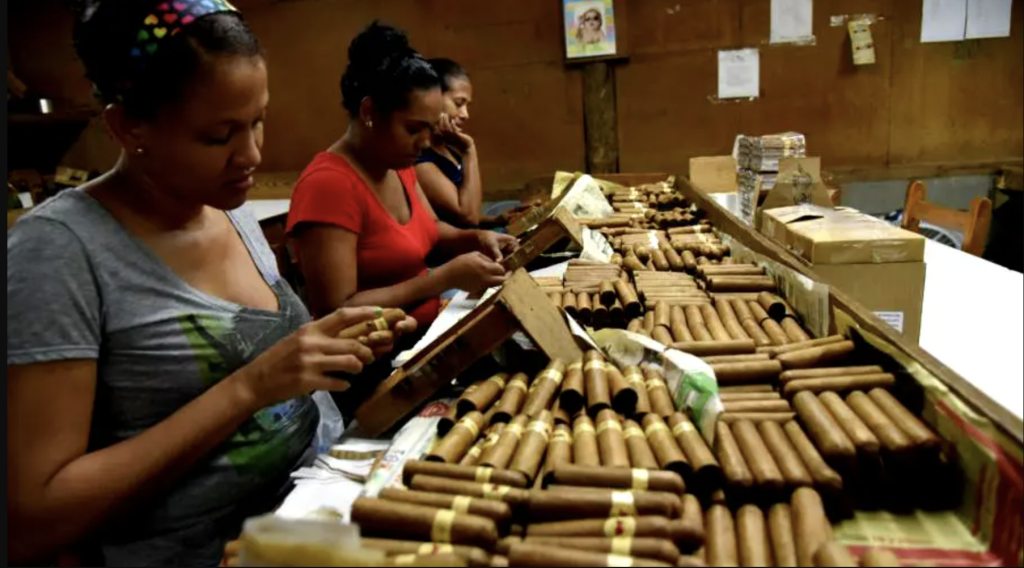
For decades, Hendrik Kelner, president emeritus of ProCigar, has been on the road promoting Santiago de los Caballeros, as the historical and current heart of tobacco production. “Santiago became the capital of tobacco thanks to the quality of its soil and the culture of free men, small-scale farmers, committed to their independence,” Kelner has repeatedly stated.
The Dominican Republic continues to solidify its status as a global leader in premium cigar exports, driven by a thriving industry that blends tradition, craftsmanship, and innovation, El Caribe reports. Dominican premium cigars have become symbols of quality and prestige in international markets.
In 2024, the Dominican Republic reported cigar exports valued at over US$1.3 billion, with approximately 130 countries importing its products. The industry is supported by 470 companies, generating over 100,000 jobs—40,000 of which are direct—across 15 provinces, including Santiago, La Vega, Espaillat, Montecristi, and San Juan de la Maguana. Specialized free trade zones, such as Tamboril, house 75 artisanal tobacco factories, where unemployment is nearly nonexistent.
The country’s tobacco cultivation dates back to the 15th century. Historical accounts note that Christopher Columbus observed indigenous practices of smoking tobacco mixed with hallucinogenic plants. The 1857 revolution in the Cibao region further entrenched tobacco’s role in the economy, as local producers resisted foreign monopolies. Today, Santiago remains the heart of the industry, with its unique climate and soil conditions ideal for growing the prized tabaco Dominicano, El Caribe reports.
The Cuban diaspora in the 20th century significantly influenced the Dominican cigar industry, bringing techniques and expertise that elevated the craft. Artisans emphasize empirical, hands-on methods, passed down through generations. However, the sector faces challenges in attracting young talent. Ciro Cascella, president of Arturo Fuente, warns: “It’s increasingly hard to find young people willing to work in tobacco. This is artesanía; we must nurture it to prevent it from dying.”
High global demand has strained production capacity and sustainability. Guillermo León Herbert, president of La Aurora, stresses the need to balance growth with quality: “Our daily challenge is maintaining excellence in every market without sacrificing our identity. We must understand every consumer, innovate, and preserve strategic alliances.”
The industry also grapples with U.S. tariffs, its largest export market. Ivan Hernández Guzmán of Intabaco notes, “The U.S. imposes 36% tariffs on our main competitor. We’ve been less affected.” Cascella remains optimistic: “If tariffs apply to all, we must comply. But the essence of our premium cigars remains unchanged.”
Beyond exports, the tobacco sector is a vital source of national employment. Ivan Hernández Guzmán highlights its role in empowering youth and women, stating, “Tobacco sustains local economies and offers growth opportunities, with more women and young people entering the production process.”
Read more:
CDN report on Dominican tobacco industry
El Caribe
1 May 2025

